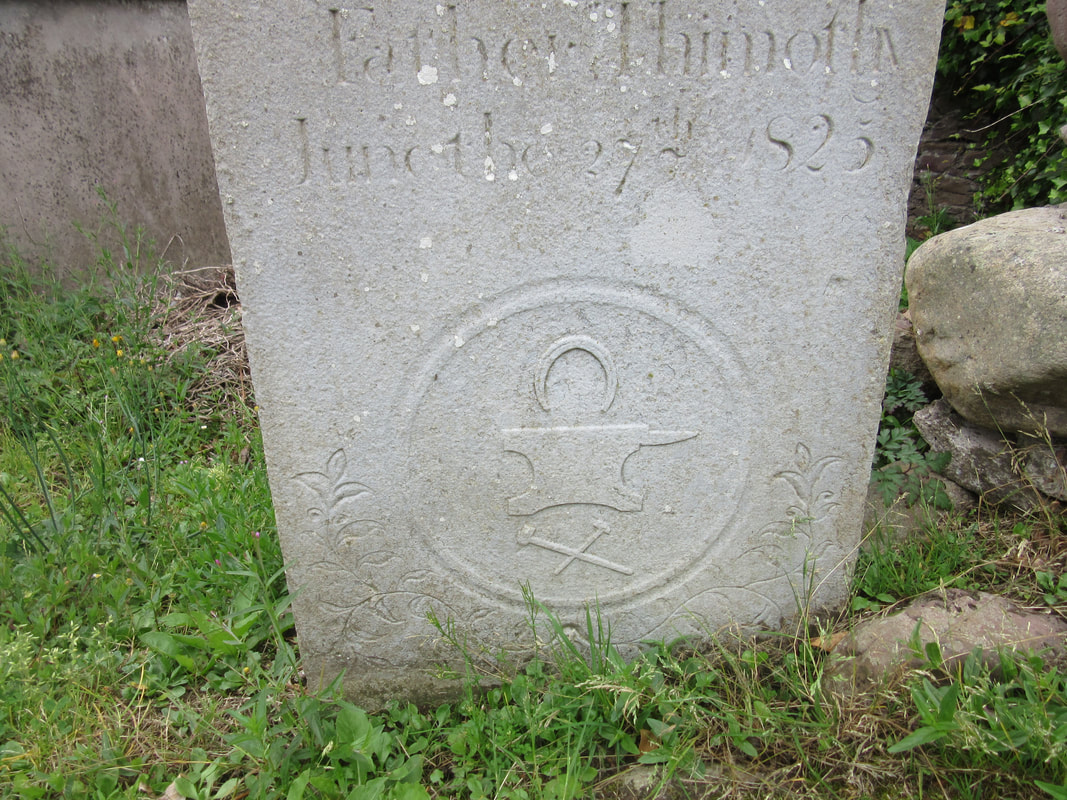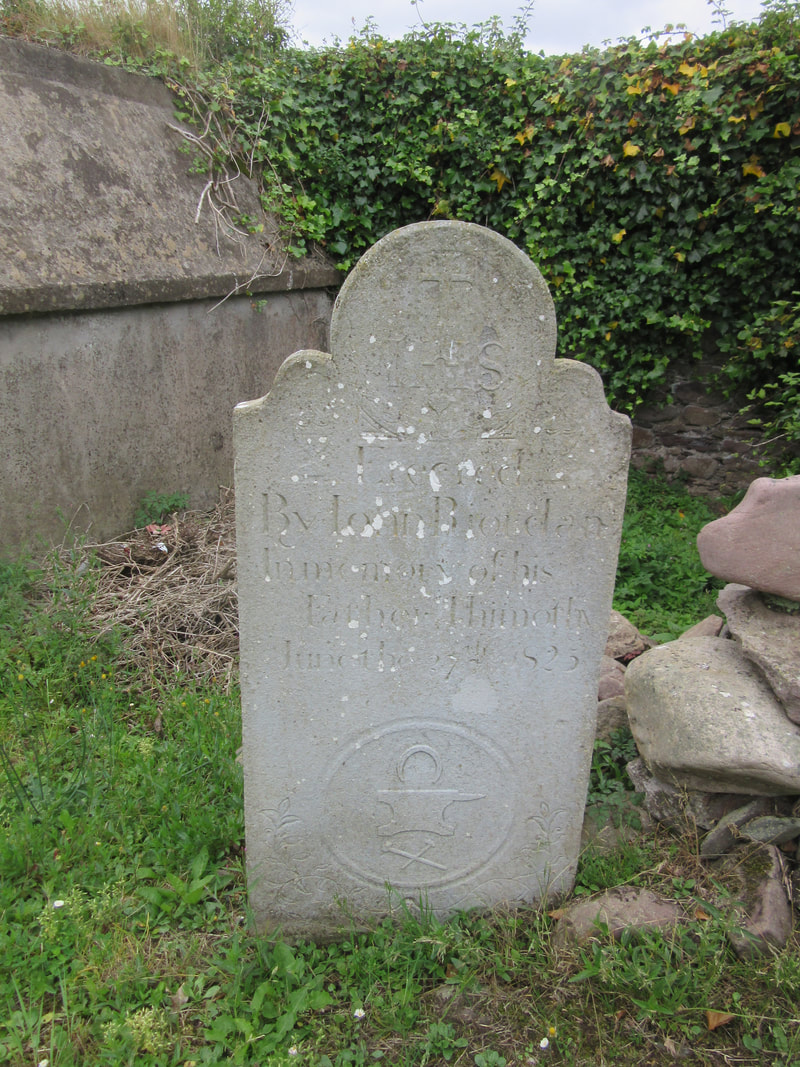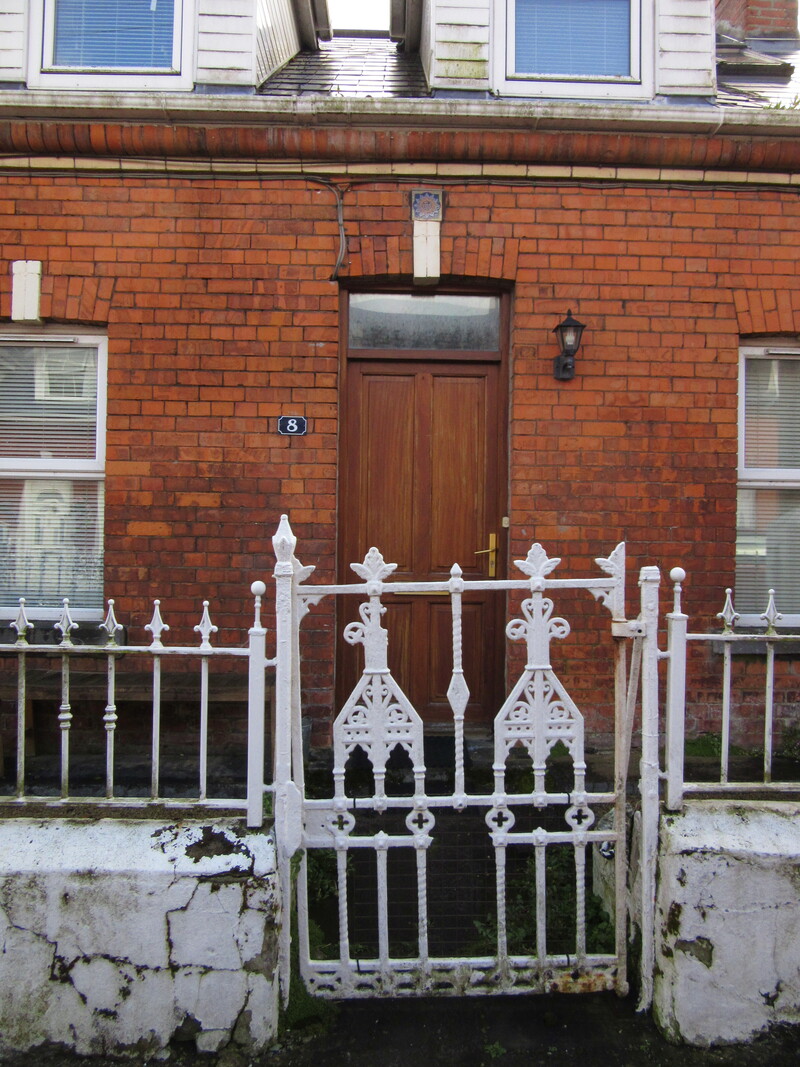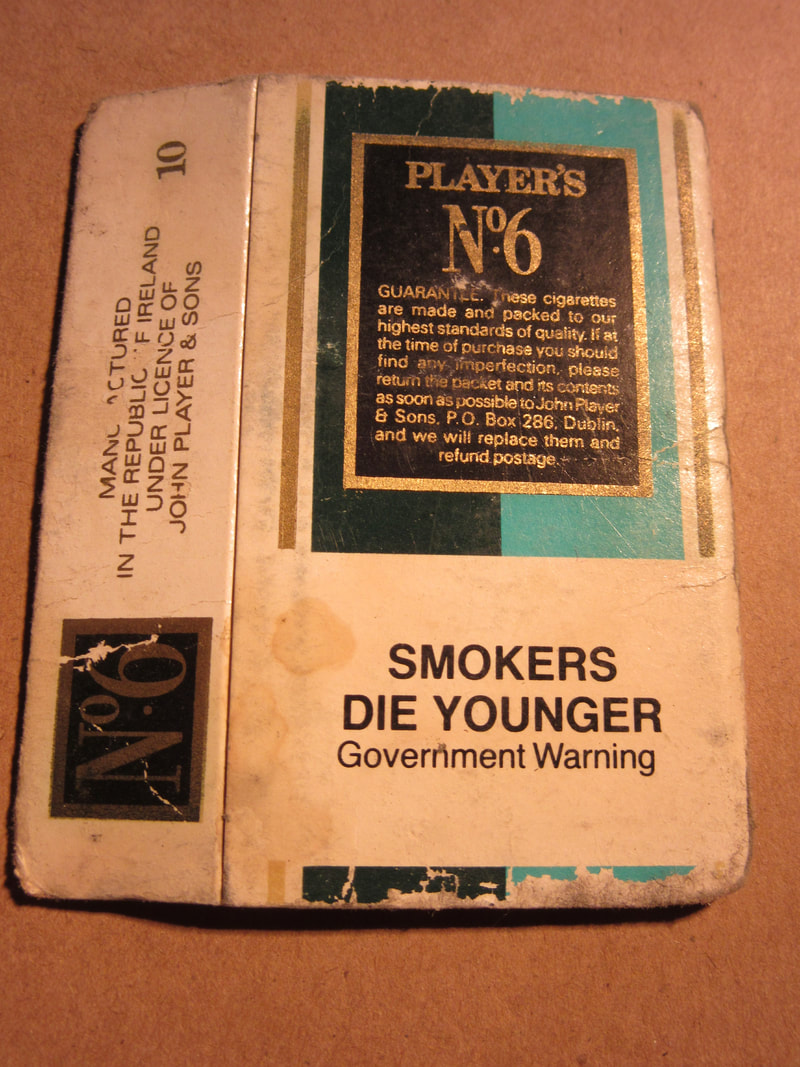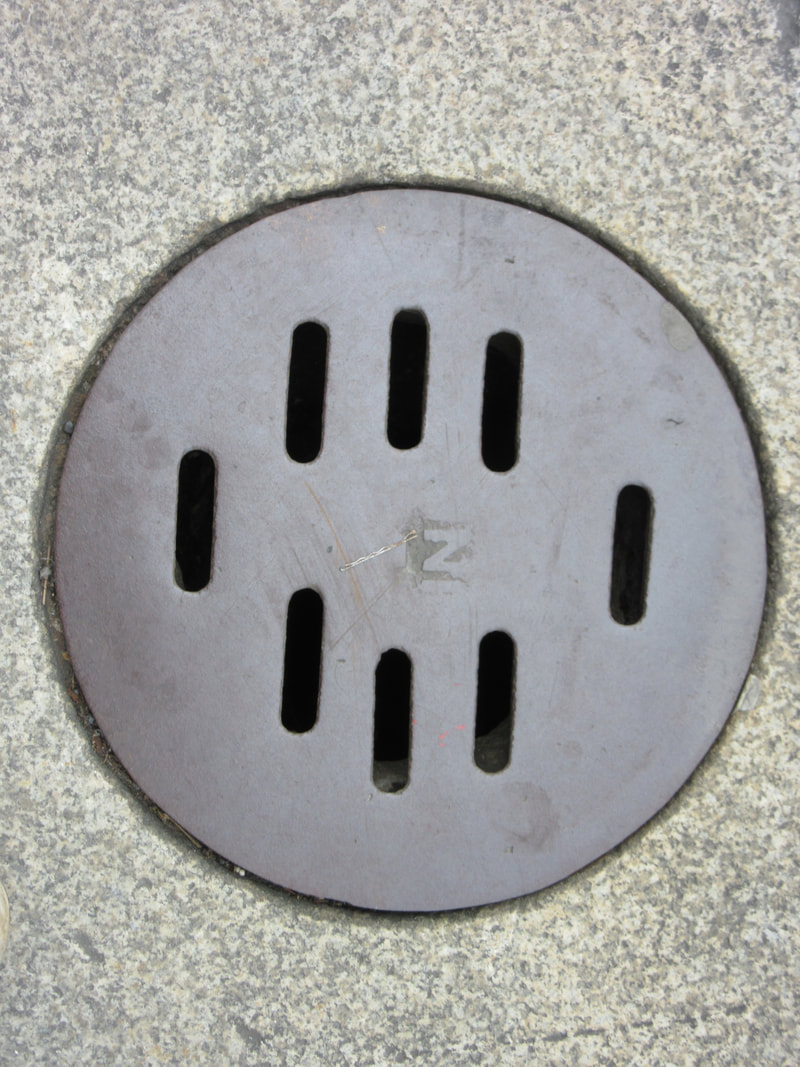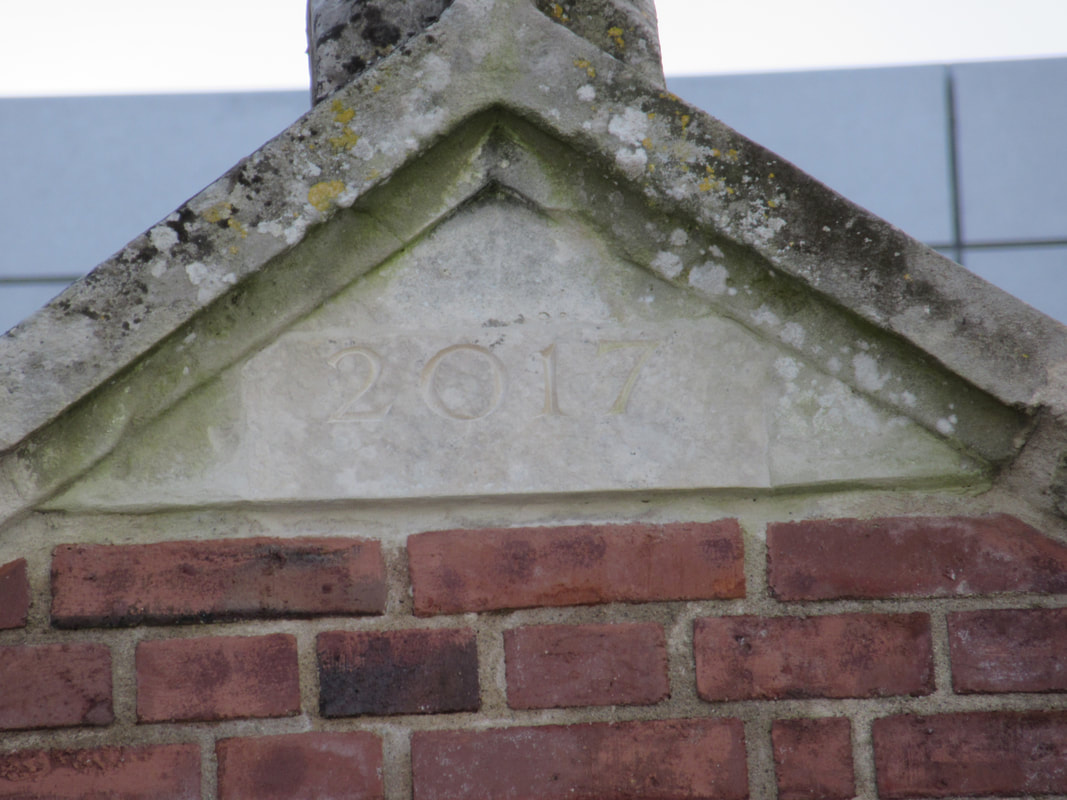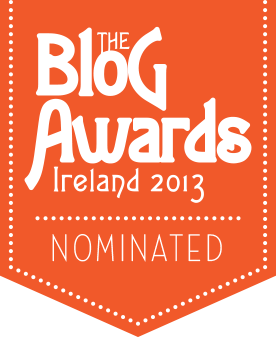| Last August, I was on a road not-before travelled, the best type of road to feed the O.C.D. of sign-spotting, memorial-spotting, and finding things new. I turned off the N70 Ring of Kerry. I had passed Dooks Golf Club and was on my way towards Cromane when I spotted this sign. My initial thoughts were as to the odds of the person returning the troughs having read the sign; and, whether spending money on the printing of the corriboard sign was a good investment. These photos remained foldered away on my drive for thoughts and rambles that may turn into a blog at some stage. On Saturday, I was chatting with Colm whose fishing routine has been interrupted in recent years by the theft overnight of outboard engines – such engines seemingly departing the country. This has had the consequence of less boatmen in the market to cater for the needs of fishermen. Then later that day, I spotted the tweet from @CorkCoast with the hand written sign requesting return of stolen garden roller. These were enough relocate those photos from last August into the blogged folder. | The spelling issue was not necessary to justify inclusion in this blog – but it definitely helped…. As I drove off, another thought was whether ‘Cattle Nut Troughs’ or ‘Cattle Nuts Trough’ was the more appropriate. Google did not think either appropriate: Cattle Feed Trough being their preferred description. |
|
0 Comments
Written In Stone ≠ Forever Last Sunday, a trip to west Clare, brought me face to face with a phenomenon new to me. In the Church of Ireland cemetery in Kilrush, many of the headstones appear to be of local Liscannor stone, a lovely, dark and grooved stone. I am familiar with its use for hearths and paving. My graveyard rambles have not extended often to County Clare so I cannot recall seeing many headstones using this stone. Its proximity and availability most probably accounts for the number encountered last Sunday. The main purpose of my visit was to view the Famine Memorial and shortly after, I stopped. Initially it looked like pieces of stone were dumped on top of a flat headstone. More investigation suggested that a layer of the stone had delaminated. In doing so, the thin layer had broken into many pieces. I really enjoyed Jean Sprackland’s book a few years ago. My copy has many hand-written notes – marginalia of sorts, being located in the blank end pages. One of these notes refer to the quoted piece which seriously impacted when I read it. Jigsaws were me growing up. They allowed escape from participation and conversation. I would so love the time and permission to assemble the stones – to ensure that the headstone is read, even for just one more time.
This lifebuoy provided a source of discussion when awaiting our meal when on holidays a few weeks back.
Trawling through Twitter this morning, I spotted a tweet from Survivors Unite at Last in which she included a copy of her mothers’s birth certificate. This cert records the profession of her maternal grandfather as a Tinsmith. Very many trades are dwindling in numbers or disappearing completely. Tinsmith is definitely in that category. Automation and machinery has had its impact, so too has plastic.
The tweet reminded me of my journey west in early July. Just over Two-Mile Bridge on the Macroom side at Coolcower, the civil engineering works were well advanced for the construction of the Macroom- bypass. But just as one cannot make an omelette without cracking eggs, serious muck-shifting cannot be done without some disturbance. I stopped early that morning to record that another reference to Tinsmith had been cast aside to the memory banks. Many, but not all, memorials (and grottos) have been relocated and repositioned after roadworks. Only time will tell if the memorial to Tinsmith Danny Hourigan is to be reinstated. UPDATE 2022.03.08Last Saturday, March 4th, saw me on the road to Baile Mhuirne. It was my first time travelling on the Macroom by-pass, the bit that is open at least.
Was good to see that the memorial to Danny Hourigan has been reinstated At the start of our conversational Irish walk this morning, there was a brief discussion of the Irish word for Blacksmith (Gabha) and the name Smith (MacGabhann). On our way back, we passed Smithgrove Terrace.
This brought to might a recent tweet from Christy Cunniffe about a headstone at Gallen, Ferbane, Co. Offaly with carvings of blacksmith’s tools. This reminded me of a similar carving at Kilgobbin, Camp, Co. Kerry. References to Blacksmiths and Forges have long received nods of appreciation and respect when spotted by my eyes. These co-incidences are enough to remember Thimothy Riordan who ceased being a craftsman in 1825.
This piece of sculpture was in place for 10 years before I realised it existed – unfortunately the time I had to enjoy it was very limited. In May 2016, Micko told of his encounter walking the dog one evening. Coming up the quays by Penrose House, and approaching the bridge, he heard someone talking but there was no one nearby. Some investigation revealed that the four stainless steel structures were responsible for the sound of voices – only two of them actually.
Today I spotted a retweet from the Crawford Art Gallery that reminded me of the chat, my subsequent visits to the Listening Posts, and my promise to self to write a short blog on art installations not just being for the unveiling ceremony and plaque unveiling – some art needs some maintenance, a little love and affection. A few days after the chat with Micko, I went down to Penrose Quay. Two of the pieces were damaged and being used as litter receptacles. The other two were broadcasting lists relating to exports and passengers from the Port of Cork. I stopped and listened for a while – some nice chill out time. After this, I went a bit out of my way a few times to hear the messages – but then they were gone. Dowcha Boy, White Vision, “Few people can claim that they owe their very existence to a pigeon” This is the opening line of story that I heard last November on Sunday Miscellany. Gail Seekamp tells the story of White Vision after her heroic experiences during World War II, 60 miles in 9 hours. She was renamed White Saviour. The Dickin Medal is the animal equivalent of the Victoria Cross. White Vision was one of the first three recipients in December 1943. Nine months later, Paddy was similarly honoured. I read of Paddy in Ireland’s Own. A plaque was erected in his honour at Carnlough, near Larne, and is on my To Visit list. It looks like there may be two plaques and a song - and another song, of sorts. In 2010, there was a flypast in commemoration. This week I read of Cónal Creedon’s excellent book, Begotten Not Made, being selected for an Eric Hoffer Book Award in the U.S., and was reminded of Dowcha Boy whose exploits in World War I pre-dated the Dickin Medal. Feted on returning to Cork, the Legend of the Northside, a small but critical figure of the book, has not been forgotten by this reader. Paddy lived until he was 11. White Saviour lived for 10 years after her rescue night. Based in Rialto in Dublin, IHU 15 67080 was ringed in 2015, which I think may also be year of birth. I hope that she is now competing in races for pigeons with disabilities. On Thursday, a ringed leg was spotted in the grounds of St. Fin Barre’s Cathedral. Dowcha Boy survived being shot. White Vision survived the stormy night flight that her fellow pigeon did not. Maybe IHU 15 67080 is flying, and hopping, about quite contentedly having evaded the peregrine around the golden trumpets mentioned in a tweet this morning.
Orla Peach’s tweet and listening to The Unthanks earlier, was enough of a co-incidence about pigeons in one week to warrant this rambling blog.
The twitter feed on Tuesday morning revealed that that day, 15th January, was the feast day of St. Ita. That morning, I was to attend a meeting at the St. Ita’s Hospital complex in Portrane, north County Dublin. I have been told that St. Ita’s Hospital complex is that largest land bank owned by the H.S.E. in the state. Having been there a few times, that does not surprise. I have been in Portrane over the past few years for meetings but the co-incidence of the feast date did resonate a bit and it rattled around my grey matter as a distraction. The first time, I visited was three or four years ago. The building we were to work on had been vacated and partially cleared out. I spent a couple of hours, alone, walking around a large empty three storey former mental hospital making notes and getting to know the building. The only company were a few startled pigeons. Whether they were more startled than me, I am not sure The closing of doors behind me did sound louder than normal. My ears were alert to any noise. I was glad to return the keys to the maintenance crew and hit the road for home. But I was luckier than the Architect. He carried out his initial inspection on a different day but was locked in with the message to give a call when ready to leave. This was an early lesson in the quality of mobile reception. The last person spotted knocking on the windows trying to get out was not a patient, but an Architect who spent two hours longer than intended with some remnants of the previous use to keep him company. I never asked if he took any mementoes from his trip. I did. The final clean out had not yet happened so I pocketed some old cigarette packets that lay on the floor. A reminder of the days when there was more than health warnings on the pack. Driving home on Tuesday, I detoured through Phibsboro and Cabra. I decided to stop and photograph the replacement Liam Whelan Bridge – the plaque has been repositioned in the new concrete structure.
Turning back to the car, I noticed an old Players No. 6 ghostsign on the end wall of the building on Connaught St. Players No. 6 was one of the boxes that I salvaged from St. Ita’s. Too many co-incidences not to warrant a blog post. If I only had time to write all the blog posts that are rattling around my brain. There are so many photographs foldered on the drive, just awaiting some words to be uploaded here.
These bugs and creepy crawlies were not even in the foldered category this morning. There were in the large grouping or of 250 days of photographs in the ‘To Be Foldered’ folder – but no longer, thanks to a tweet. This morning, Look UpLondon’s post was about the London School of Hygiene & Tropical Medicine. When I saw the images, it reminded me of the building I went past last December. The blog post reminded me of everything that impressed at the time and which was photographed:
To learn about the building, take thyself off to LookUpLondon – it will be time well spent. This morning I spotted a tweet about the closing time at the Regional Park in Ballincollig being brought back an hour with the start of September.
My Irish vocabulary is not huge but the use of ‘geatí’ did look odd. The web confirmed that it was incorrect – ‘geataí’ being the plural of ‘geata’. In my real life, as opposed to this virtual life, I have spoken with the official translator at Cork County Council, so am aware that she exists, or at least existed. I was very very surprised to read that only a month ago the Irish Examiner revealed that Cork County Council used Google Translate as a translation service – definitely not fit for that purpose I would have thought. The dogs needed a walk this afternoon so we headed to the Powdermills so that I could take my own photograph of ‘Geatí’. Within yards of the closing time sign, there is another notice regarding the locking of the gates. This uses ‘Geataí’ – curiouser and curiouser….. I spotted tweets earlier today regarding the formal opening of the former Cork District Model School as the new Courthouse Complex. There are many photos of the refurbished areas and the new extension – some of the 25,000 replaced bricks What struck me when the scaffolding came down was not captured in any photograph or clip that I have seen but the mark left of the current generation of craftsmen to remind the future that those in 2017 also assisted its retention. That April Friday evening, while I was taking my photos, a lady also stopped to look at the newly exposed building. She said that she had gone to school there and was looking forward to being able to look inside. A few weeks later, in Chetwynd, I was reminded as to the titles I might like on my headstone and wondered if my school or place of employment might be one, probably not for me. While the women of the house sit in front of a television, waiting for the appearance of a wedding dress, I am contemplating the removal, deliberate or otherwise, of part of the history that remains from when Ireland was part of the United Kingdom. I have often blogged on matters relating to postboxes – colour & font; split-personalities; repurposing; quirks of manufacture; and, even, the riddle of Shanagarry. Another blog on a post-box should not surprise too many who pass by here often. This is another reminder to self to continue the populating of the map that I started – hundreds and hundreds still to do. This blog has been prompted by a tweet from Eoin Lettice about the upcoming Sheppard’s Auction where Lot 2 is a Victorian cast iron pillar postbox, guiding €2,000 - €3,000, previously resident at Patrick’s Street in Cork. My recording of postboxes only goes back as far as this website and the VR box from Patrick’s St. was before that. If I were to guess, it may have been replaced by the modern rust-bucket style unit, now at the junction with Academy Street, but I may need to flick through books with old photographs to hunt for more clues. Maybe An Post needed the money and decided to sell off some postboxes from stores. Maybe some ‘enterprising’ person thought that they were being wasted in An Post stores. The old boxes definitely are better wearing and hardier than that the modern versions. I would have thought that it would be an idea for An Post to keep the old style to replace the postbox causalities – and there have been a few. There was an old pillar box in Ballyphehane in Cork that is no longer – or substantially no longer. The base is still there and used as a concrete foundation for the new style box. I suspect this was a victim of a road traffic accident. The Carron Scotland pillar box at the Holy Ground in Dingle lost its battle with a truck that came down Green Street and ended up in the Woolen Store shop. It was replaced by an old-style Handyside pillar box The Carron, Scotland pillar-box that stood outside Bandon Road Post Office in Cork city is yet another that is no longer.
But whether this was another victim of road traffic or revenge for the ambush at Ballynamona, Mourneabbey is still open to debate and supposition  As I have mentioned more than once, I really appreciate poetry in the public realm. I got a very pleasant surprise heading over town for lunch, a few chill out moments, compliments of PoetryDayIRL When walking back to work, I could have been mistaken for a dog with the level of interest I gave to every tree en route. Unlike the dog’s bladder, I was unsatisfied as I did not spot any more. I had hoped to get to the launch of Gerry Murphy’s new offering today at the City Library (17.30) but it looks like life will intervene. In compensation, one of Gerry’s poems will form my contribution to @Poe_A_Tree when I leave work today – maybe there will be time for more when I get home later. |
AuthorFrom Cork. SUBSCRIBE
Unless otherwise specifically stated, all photographs and text are the property of www.readingthesigns.weebly.com - such work is licenced under a Creative Commons Attribution - ShareAlike 4.0 International Licence
Archives
May 2024
Categories
All
Blogs I Read & LinksThought & Comment
Head Rambles For the Fainthearted Bock The Robber Póló Rogha Gabriel Patrick Comerford Sentence First Felicity Hayes-McCoy 140 characters is usually enough Johnny Fallon Sunny Spells That’s How The Light Gets In See That Tea and a Peach Buildings & Things Past Built Dublin Come Here To Me Holy Well vox hiberionacum Pilgrimage in Medieval Ireland Liminal Entwinings 53degrees Ciara Meehan The Irish Aesthete Líníocht Ireland in History Day By Day Archiseek Buildings of Ireland Irish War Memorials ReYndr Abandoned Ireland The Standing Stone Time Travel Ireland Stair na hÉireann Myles Dungan Archaeouplands Wide & Convenient Streets The Irish Story Enda O’Flaherty Cork Archive Magazine Our City, Our Town West Cork History Cork’s War of Independence Cork Historical Records Rebel Cork’s Fighting Story 40 Shades of Life in Cork Roaringwater Journal |
















